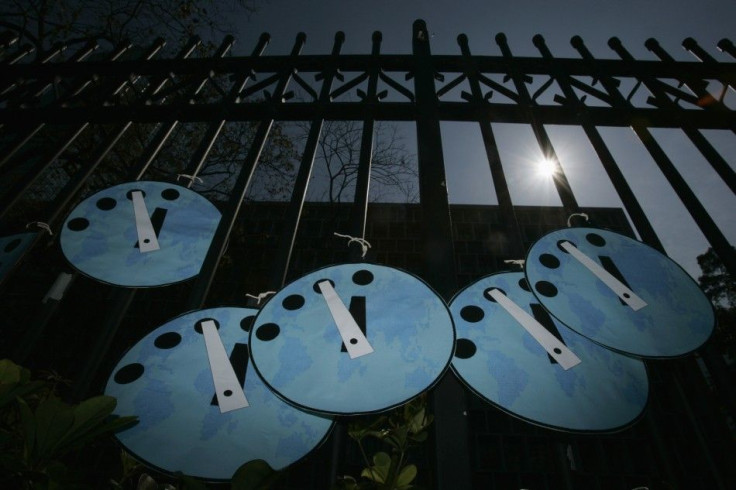Doomsday Clock: 7 Points You Need to Know

The Doomsday Clock, a symbolic measure of how near the human species is to self-destruction, probably as a result of nuclear weapons programs or climate change, was adjusted, on Jan. 9, to five minutes to midnight - or doomsday!
The Board of Directors of the Bulletin of the Atomic Scientists at the University of Chicago, who came up with the idea of a doomsday clock in 1947, as a reminder to humanity against self-inflicted annihilation, readjusted the clock, due to a lack of global policy action regarding nuclear disarmament, potential nuclear conflicts in regions including the Middle East and global climate change.
Here is a roundup of the top 7 facts you need to know about the Doomsday Clock:
1. Initial Settings - The Doomsday Clock was initially set to 11.53 p.m. or 7 minutes to midnight, in 1947, due to the Cold War at the time of its inception.
2. Number of Corrections - The clock has been adjusted twenty times since 1947, reflecting the ever-changing international state of affairs pertaining to global nuclear weapons programs.
3. Safest Point - The safest point, or the farthest humanity was from destruction, according to the Doomsday Clock, was recorded in 1991, when the clock was moved to 11.43 p.m. or 17 minutes to midnight. The clock gained several minutes after the U.S. and the Soviet Union signed the Strategic Arms Reduction Treaty in the same year.
4. Riskiest Point - The closest humanity has ever been to destruction, according to the Doomsday Clock so far, occurred in 1953, when the clock was set to 11.58 p.m. or just 2 minutes to midnight. The testing of thermonuclear devices by the U.S. and the Soviet Union, within nine months of one another, was a major reason why.
5. False Authority Fallacy - The keepers of the Doomsday Clock have come under criticism over the legitimacy of their authority to pronounce judgment regarding clock settings. While no one questioned the expertise of the scientists in charge of the clock, their ability to predict political events, such as nuclear wars, terrorist attacks and missile testing, as well as their fallouts, was questioned.
6. How Doomsday Decisions Are Made - The Science and Security Board of the Bulletin of the Atomic Scientists, along with their sponsors, periodically review the implications of recent events and trends, with inputs from other experts on nuclear weapons, nuclear energy, climate change and bio-security.
According to an official statement, the latest Doomsday Clock revision addressed questions like the future of nuclear power after Fukushima; the management of nuclear weapons in a world of increasing economic, political and environmental volatility; the links between climate change, resource scarcity, conflict and nuclear weapons; and the requirements for a robust implementation of the Biological Weapons Convention.
7. Doomsday Clock Doesn't Predict Doomsday - The Doomsday Clock shouldn't be confused with popular doomsday prophesies and hypotheses that have been around for centuries. The clock is only an imaginary reminder for humanity to act to save the planet and doesn't predict the exact date the world will end.
© Copyright IBTimes 2024. All rights reserved.












